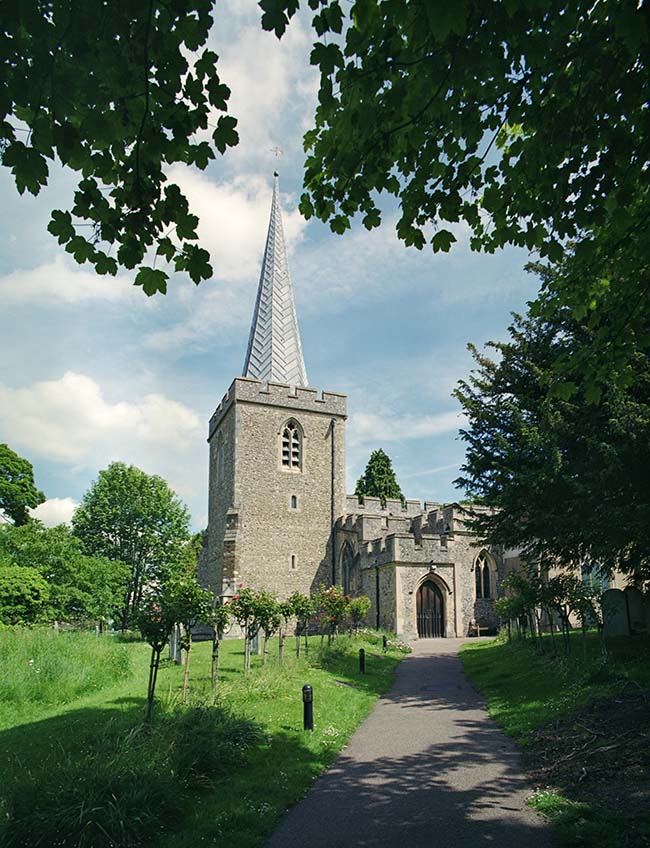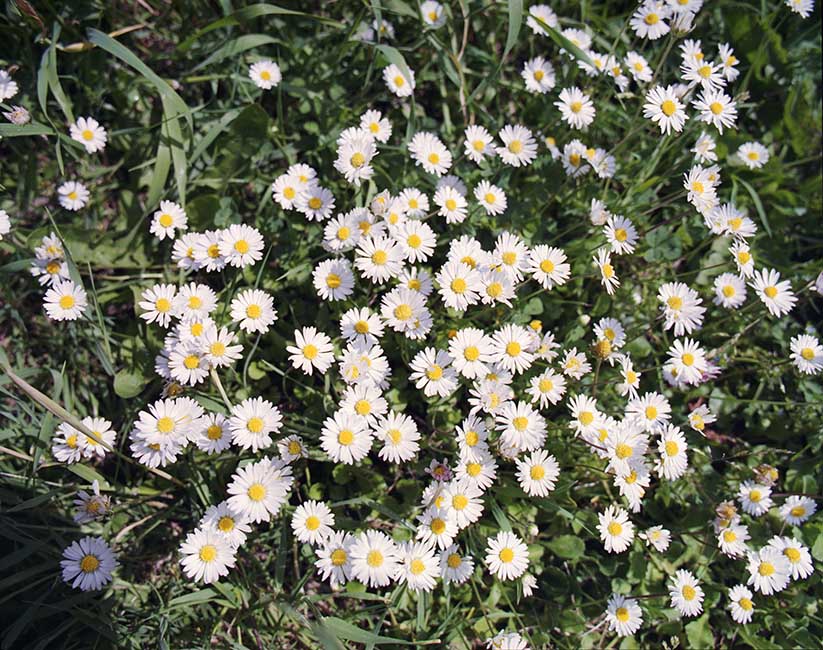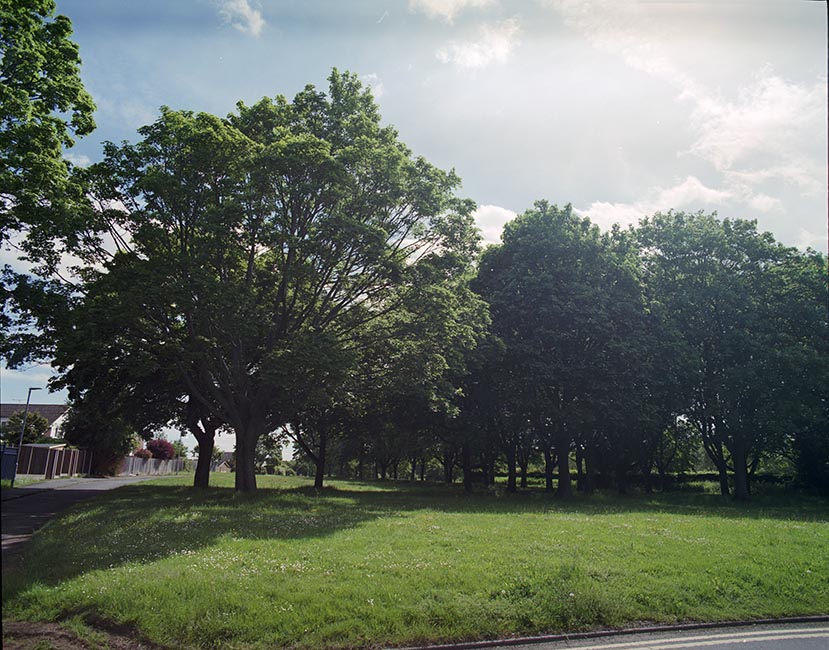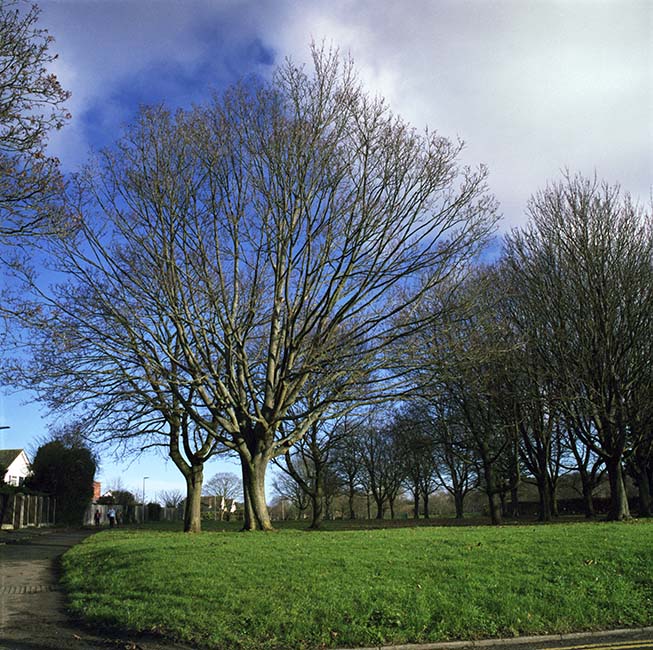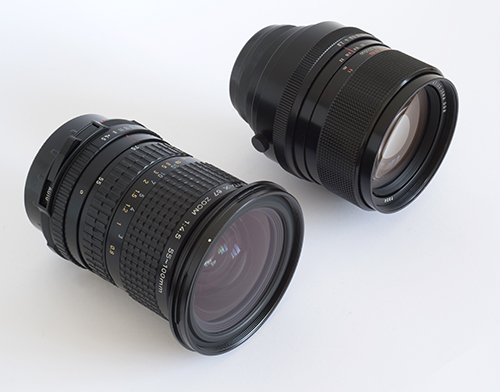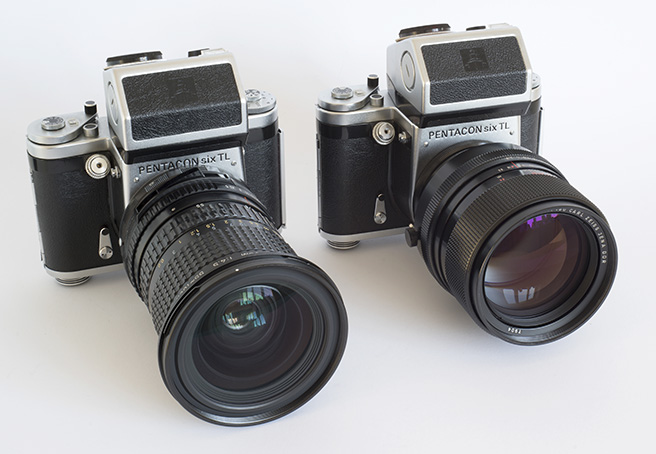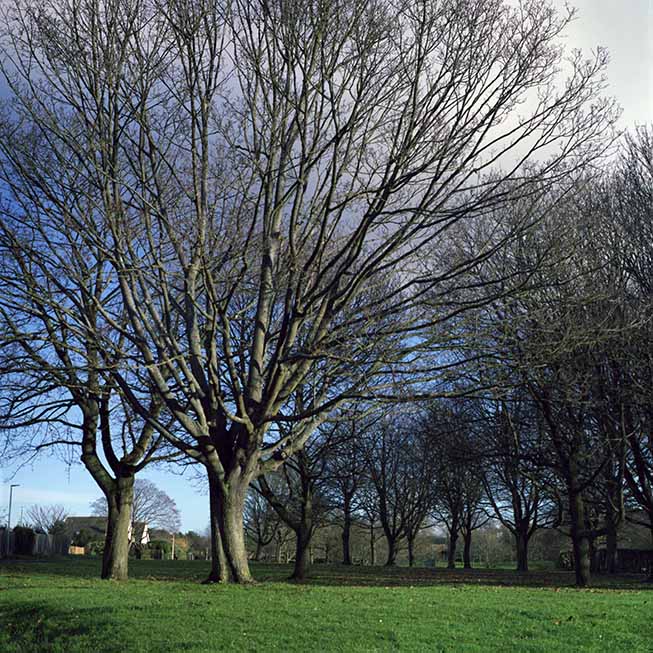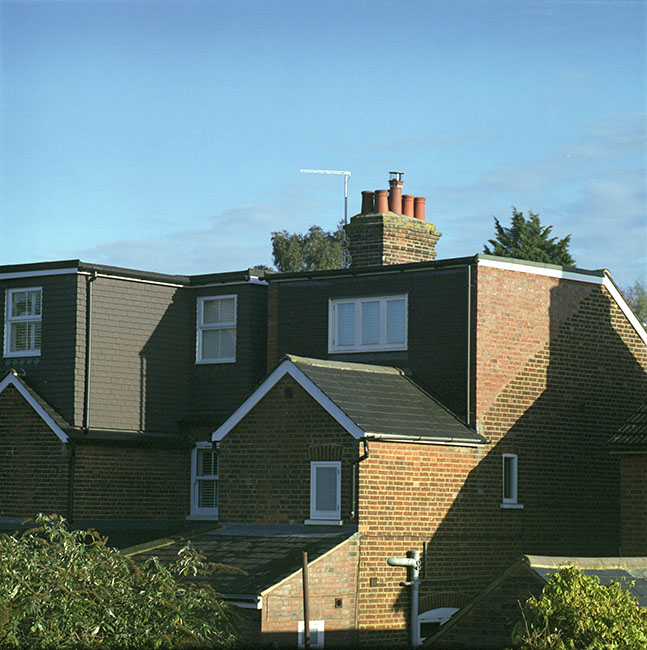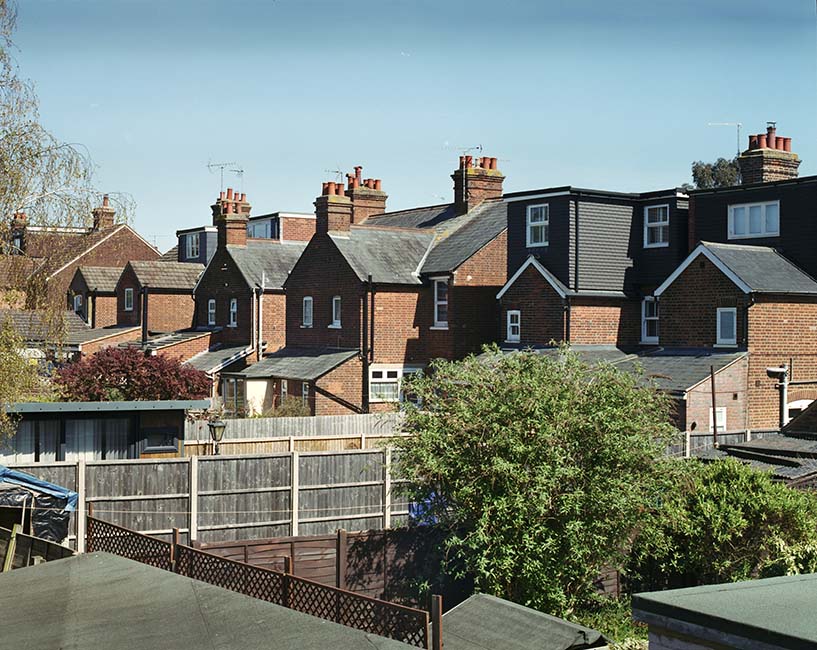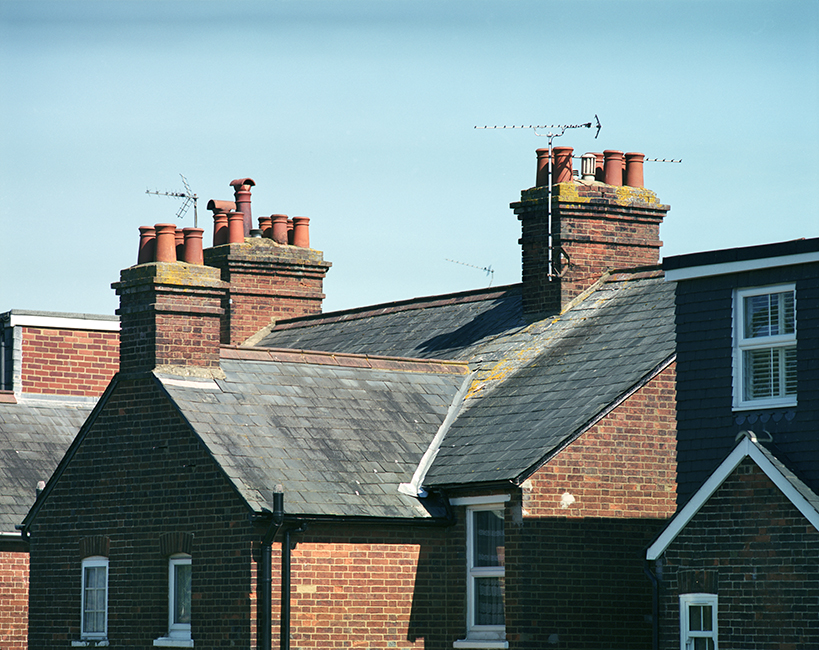by TRA
Pentax 6×7
lens test Results
Tests from 45mm to 600mm
|
Here we show the
results of tests of a selection of Pentax 67
lenses used on the Pentacon Six and on the
Pentax 67II.
For years I have carried two or three cameras with an Op/Tech USA Dual Harness. (For details, see here.) One of the cameras is always a Pentacon Six. The other has often been a Hasselblad XPAN, or a small digital camera. It is also possible to carry a third camera by using the connection points for the sternum strap that goes across the chest, quite high up. To shoot tests with the Pentax 67II, I decided to use the same Dual Harness. See the picture to the right. Carrying both a Pentacon Six and a Pentax 67II results in quite a heavy set-up, as the Pentax 67II is a very large and very heavy camera. In addition to this, the 67II only has strap lugs on one side of the body, so the camera hangs down on its side. When the camera was still being manufactured, Pentax offered the option of having a third strap lug added high up on the other side of the body, near the integrated grip. This would enable to camera to hang horizontally. With the discontinuation of the camera, I don’t know if this option is still available.
|
|
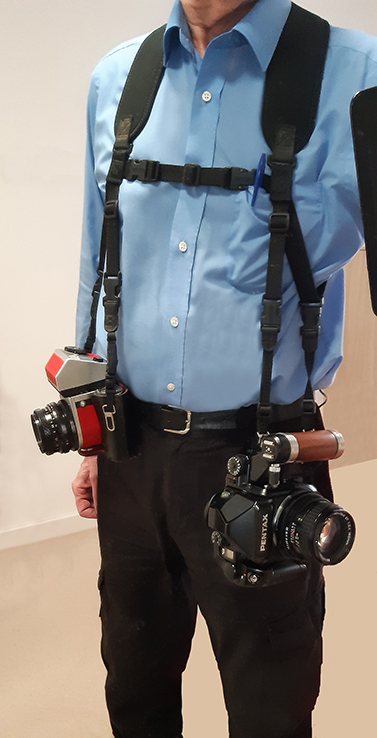
[optech_half_inch
.jpg] |
|||||
On this page,
clicking on the images below opens a larger version
of the image. With most browsers, a second
click will enlarge the image further.
| The Pentax 105mm f/2.4
lens Pentax offered two “standard” lenses for the Pentax 6×7/67/67II:
For this shot on a November afternoon we loaded PRO400H film into the Pentacon Six. Exposure (using the Pentacon Six TTL metering pentaprism) was 1/125 at f/22, hand-held. |
Pentax 67 105mm
f/2.4 lens
[C581_6_105mms.jpg]
|
|||
| The 45mm lens:
closest focus and infinity We have already looked at other aspects of the 45mm lens here and here. Here we shall look at its performance at its closest focus and at infinity. These three images were shot on a Pentax 67II. By comparing with the previous page (here), it is possible to estimate what the coverage on the Pentacon Six would be. Here we are looking at the closest focus possibilities, at the image quality at either end of the focussing scale and at the performance of the Pentax 67II camera. Fuji PRO160NS film was used. Infinity focus For this infinity focus shot, the aperture of the 45mm Pentax 67 lens was set at f/8. I hoped that with such a wide angle lens, focus would extend to the branches of the tree that frame the shot. The camera was hand-held and the shutter was set on A. I rotated the camera to vertical and as I moved slightly in order to obtain the best composition, the shutter discharged before I was ready. With the Pentacon Six I have of course never needed to rotate the camera when taking a picture. It is clear that I will need to keep my trigger finger far away from the shutter release button on the Pentax 67II, until I am absolutely ready to fire. The result was a slightly crooked composition, which I have been able to straighten by slight trimming of the edges of the image. It also proved impossible to know what the shutter speed had been, as this was the last frame on the roll, which meant that the meter no longer worked. The only option was to wind off the film, and I decided to wait until I got home in order to do this. I fully expected an unsharp image due to camera shake, but with wide-angle lenses sharp images are normally obtainable at slower shutter speeds. Also, with the prevailing light, the shutter speed was probably between 1/180 and 1/250 second, so I got away with it. However, caution is in order when holding the Pentax 67II, especially in vertical format. |
|
||
| Closest focus Closest focus on
the Pentax 67 45mm lens Aperture set at
f/8 and shutter on A. Hand-held. The
meter showed an exposure of 1/180 sec
[C583_16_45mms.jpg] |
|
The image to the
right displays three problems: Coverage: viewfinder versus film This image was carefully composed in the TTL pentaprism viewfinder to exclude the yellow lines that are painted on the road and most of the damage to the verge in the bottom left-hand corner of the image. This surprising and disappointing result reminds us that Pentax state that the two pentaprism viewfinders display only 90% of the image. This appears to mean 90% linear, so the surface area seen is a lot less than 90% of what is recorded on film. The Pentacon Six has been much criticised by some for a similar limitation, but the critics rarely state that the Pentax 6×7/67/67II is no better in this regard. Flare Given that Pentax boast of the “SMC” or “Super Multi Coating” on their lenses, the large amount of flare in this image is surprising and disappointing, as care was taken to exclude the sun itself from the shot. The lens hood designed for this lens was not used, but obtaining adequate protection from lens shades with wide angle lenses is difficult, in any case. For more details of lens hoods (or “shades”) see four pages on this website that start here. |
|
Problems Infinity focus
on Pentax 67 45mm lens. Aperture set at
f/8 and shutter on A. Hand-held. The meter
showed an exposure of 1/125 sec
Picture taken in June 2021
[C583_14-15_45mms.jpg]
|
| The shadow in the bottom-left corner of this flower picture was probably cast by the photographer, a reminder that taking photographs should not be rushed, and also an indication of a problem with the Pentax 67II that is described to the right. | Under-exposed area A further surprise is that with the shot on the right and some others taken with this camera, there is an under-exposed band near the top of the frame. If the camera had a vertically-running shutter I would expect a shutter fault, but the Pentax 67 shutter runs horizontally. The same problem is also observed with some images shot with other lenses (see below). The cause of the problem is not known. Does the camera throat require flocking? (see here) |
|||
|
[Px67_55-100_180S_03s.jpg]
|
And here we show the
same two lenses mounted on Pentacon Six cameras,
the one on the left with the Pentax 67 lens
mounting ring and the one on the right unmodified. The 55-100mm Pentax 67 zoom lens could definitely be taken on a photography trip instead taking a wide-angle and a standard lens, although I would not trust the stitching of the Pentacon Six camera case or the straps on an older case to support such a large lens all day, and so I would need to support it constantly with one hand, which could become tiring. Here are some details of the specifications:
The Carl Zeiss Jena 180mm Sonnar lens has a rotating collar with a tripod mounting platform. The diameter given above does not include the tripod platform or the locking screw for the platform. |
| The
90-180mm zoom lens These images were shot on a Pentacon Six. This first picture was taken from only a few meters back from position used for the 55-100mm shot at 55mm shown above, and on the same day, and we observe the tighter cropping of the subject when using the longer, 90mm, focal length, the shortest setting on this lens. Fuji PRO400H film Pentax 67 90-180mm lens at 90mm 1/250 at f/16 Hand-held |
[C581_12_90-180mm_90mms.jpg]
|
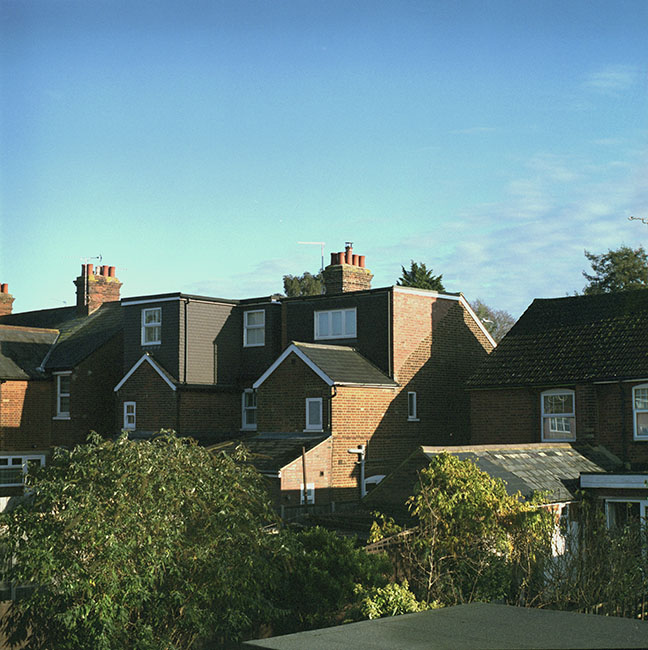 [C581_9_90-180mm_90mms.jpg] |
Here we look at two
pictures taken in late November, with its long and
dark shadows. Both were taken at the same
time and on the same Pentacon Six, which was
mounted on a Benro tripod and ball head, using
Fuji PRO400H film and the Pentax 67 90-180mm zoom
lens On the left, the lens is set at its widest setting, 90mm. Focus is nearly infinity. Exposure: 1/250 at f/16 On the right, the lens is set at the other end of its range, 180mm. Focus is nearly infinity. Exposure: 1/250 at f/14 Similar images with lenses of various focal lengths can be seen here (scroll down) and also lower down on this page. |
[C581_10_90-180mm_180mms.jpg]
|
| How does the size of the
Pentax 67 90-180mm zoom lens compare
with the sizes of Pentacon Six lenses? |
||
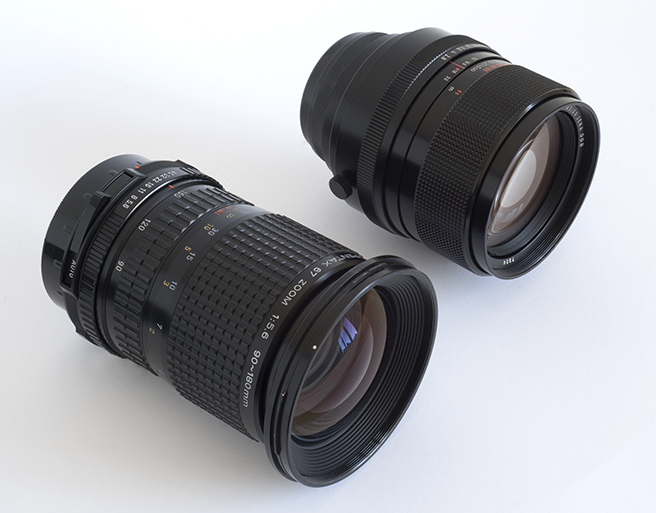 [Px67_90-180_180Ss.jpg] |
In the image on the
left here we compare the Pentax 67 90-180mm zoom
lens with the Carl Zeiss Jena 180mm Sonnar lens
for the Pentacon Six, the same lens that was used
above for the comparison with the Pentax 67
55-100mm zoom lens. In the image on the right we compare the Pentax 67 90-180mm zoom lens with the Carl Zeiss Jena 300mm Sonnar lens for the Pentacon Six. The Pentax 67 90-180mm zoom lens is clearly longer than the 180mm Sonnar but shorter than the 300mm Sonnar, which is not surprising. The maximum diameters of all three of these lenses are very similar. |
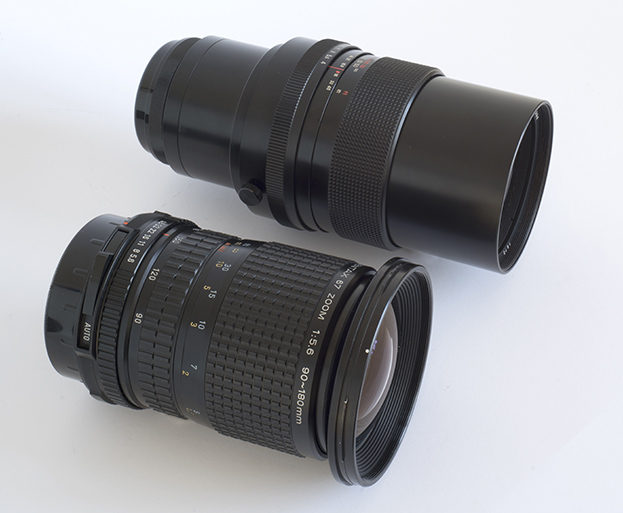 [Px67_90-180_300Ss.jpg] |
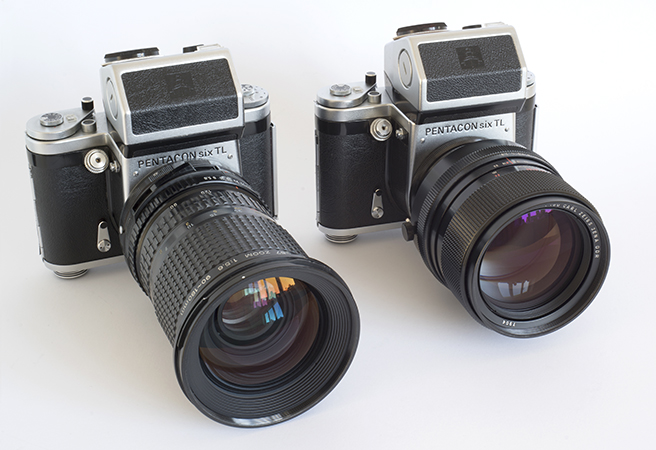 [Px67_90-180_180S_03s.jpg] |
And here we show the
90-180mm zoom lens and the 180mm Sonnar mounted on
Pentacon Six cameras, the one on the left with the
Pentax 67 lens mounting ring and the one on the
right unmodified. Like the Pentax 67 55-100mm zoom lens, the 90-180mm Pentax 67 zoom lens could be taken on a photography trip, in this instance instead of taking a standard lens and the 180mm Sonnar, although, as with the shorter zoom lens, I would not trust the stitching of the Pentacon Six camera case to support such a large lens all day, and so I would need to support it constantly with one hand, which would probably soon become tiring. Here are some details of the specifications:
Both Carl Zeiss Jena Sonnar lenses have a lockable, rotating tripod platform. The diameters given for these two lenses do not include the tripod platform or the locking screw for the platform. |
The 100mm Macro lens
| Here for comparison
purposes we show a picture taken with the Pentax 67 100mm
f/4 Macro lens on the Pentacon Six . Fuji PRO400H film was used, the shutter speed was 1/125 second and the aperture was set at f/19. The lens was focussed nearly at infinity (half way between 5m and infinity) and the camera was hand-held. For pictures that give an indication of the macro capabilities of this lens, see here. |
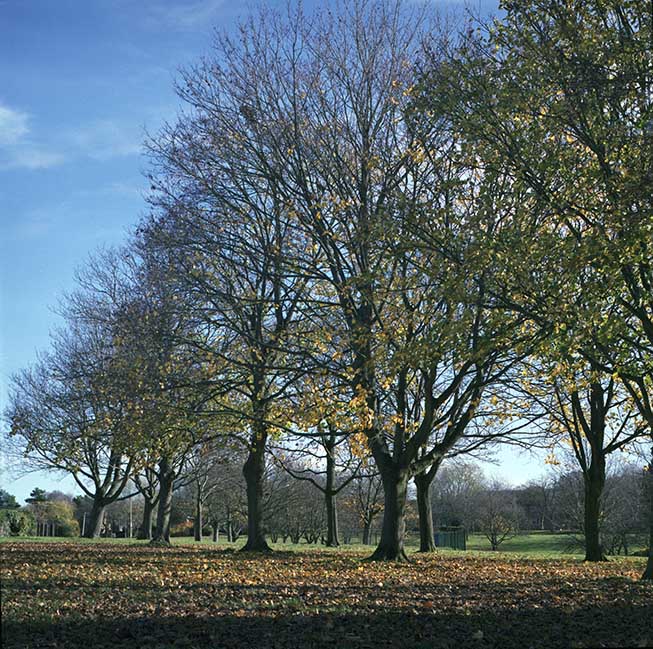 [C581_4_100mm_Macros.jpg] |
| 300mm
& 2×300mm The pictures obtained with the 300 lens were taken on a Pentax 67II. Note that the Pentax 300mm lens used here is one of the older “Takumar” lenses for the Pentax 6×7. First we compare the angle of view obtained with the Pentax 67 300mm lens with the angle of view obtained with the “standard” 105mm lens. Left-hand image: Pentax 67II Fuji PRO160NS 105mm standard lens at f/14 Benro tripod & ball head. Meter on A, showing 1/30 sec Right-hand image: Pentax 67II Fuji PRO160NS 300mm Pentax 6×7 lens f/8 Benro tripod & ball head. Meter on A, showing 1/250 sec I am surprised to observe at the top of the frame for both of these images a dark band like the one reported on above with the 45mm lens. |
[C583_5-6_105mms.jpg]
|
|
[C583_7-8_300mms.jpg]
|
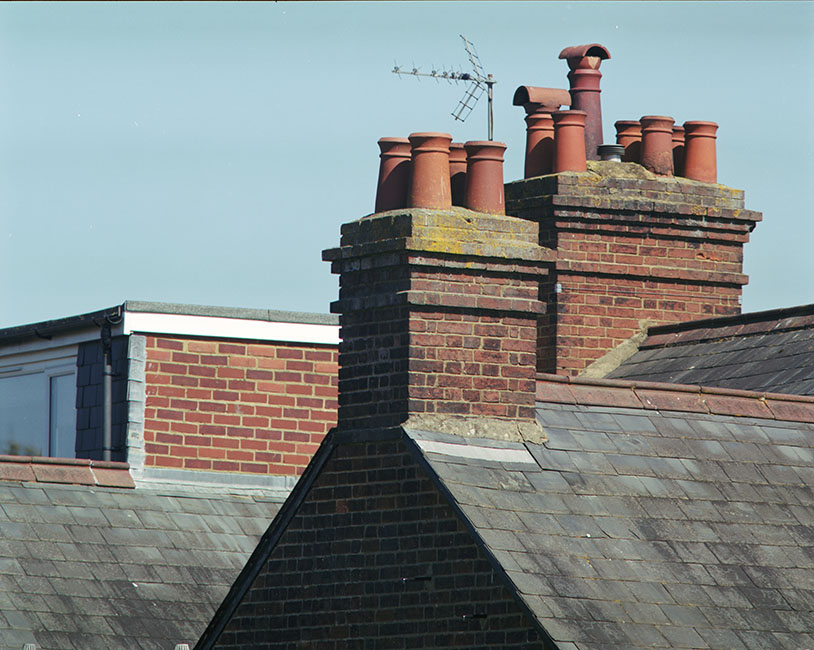 [C583_9_300mmx2s.jpg] |
Pentax
67 300mm lens + Pentax 67 2× converter Image on left: Pentax 67II Fuji PRO160NS 300mm Pentax 67 lens at f/8 + Pentax 67 2× converter Benro tripod & ball head. Meter on A, showing 1/60 sec After firing the shutter I realised that the shutter speed chosen by the camera was 1/60 sec, which is an extremely slow shutter speed for a 600mm lens. However, the Benro tripod and ball head have given me a sharp image. Nevertheless, to be sure, I opened the lens to maximum aperture in order to get a faster shutter speed. Image on right: PX67II Fuji PRO160NS 300mm Pentax 67 lens at f/4 + Pentax 67 2× converter Benro tripod & ball head. Meter on A, showing 1/180 sec The resolution at maximum aperture is clearly excellent. I think that the results of this combination of 300mm lens and 2× converter speak for themselves. |
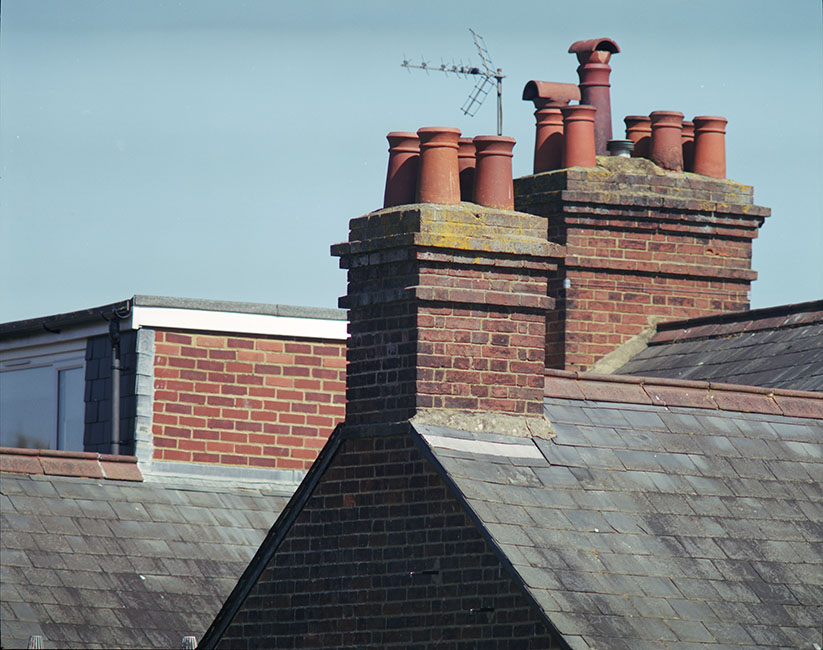 [C583_11_300mmx2s.jpg] |
| How does the size of the
Pentax 67 300mm lens compare with the
size of the Carl Zeiss Jena 300mm lens for the
Pentacon Six? |
|||||||||||||||||
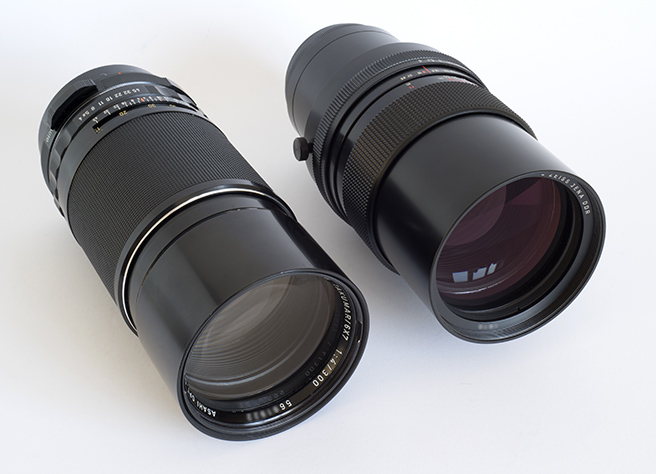 [Px67_&_CZJ_300mm_01s.jpg] |
|
The sizes of these
two lenses are very similar. Here are some
details of the specifications:
This Pentax lens has a short built-in retractable lens hood. The Carl Zeiss Jena Sonnar has a small, rotating tripod platform. The diameter given above does not include the tripod platform or the locking screw for the platform. The Carl Zeiss lens has a much more effective, longer lens hood that is screwed into the front of the lens. There were older versions of the Carl Zeiss Jena 300mm Sonnar lens that were larger and heavier. For details, see here. |
|||||||||||||||
Conclusion
The two Pentax 67 zoom lenses reviewed on this page make a valuable contribution to the lenses available for the Pentacon Six (provided that you have a Pentax 67 lens mounting ring for your Pentacon Six!).
For a comparison between the Pentax 67 45mm lens and the lenses of this focal length that are available for the Pentacon Six, see the previous page, here, as well as the above results.
The Pentax 67 Macro lens has been reviewed in more detail here.
The Pentax 6×7 / 67 300mm lens delivers excellent results, but does not bring to the Pentacon Six user anything that is not already available from the Carl Zeiss Jena 300mm Sonnar lens (which has an automatic aperture) and the Meyer-Görlitz/Pentacon 300mm f/4 lens, which has a manual aperture (the same as we get when we use the otherwise-automatic Pentax 67 300mm lens on a Pentacon Six).


